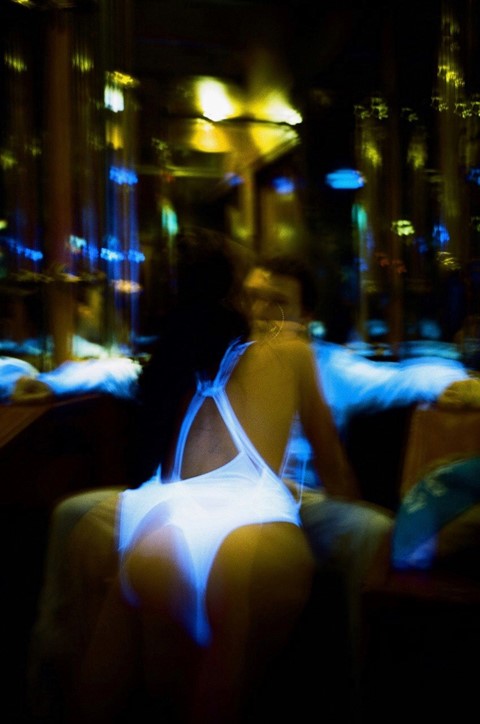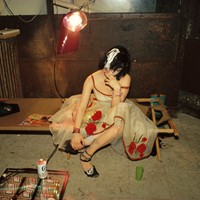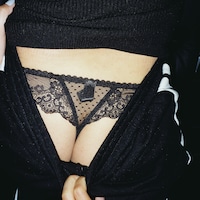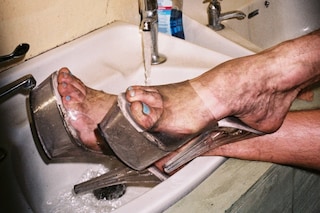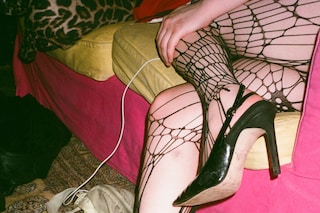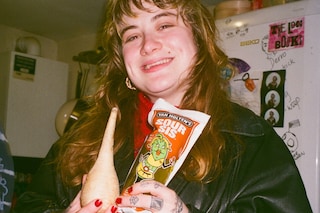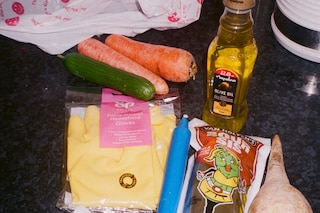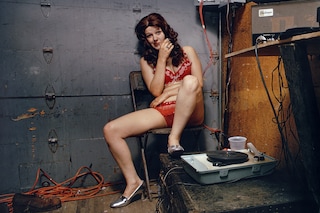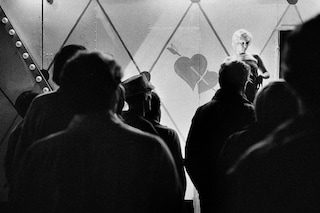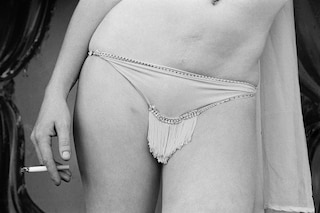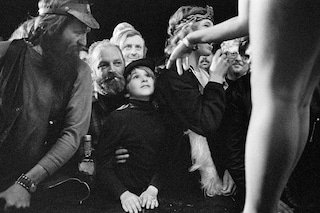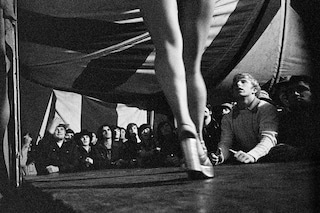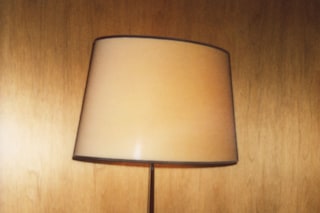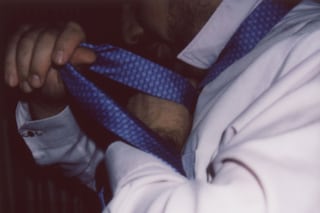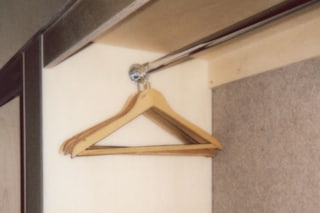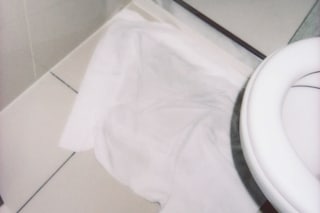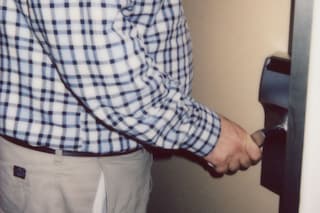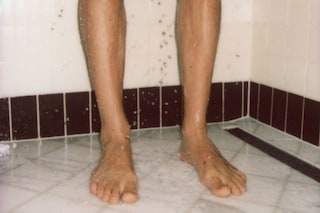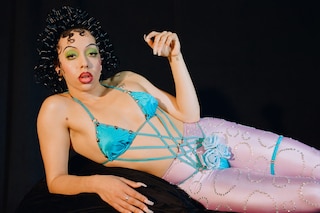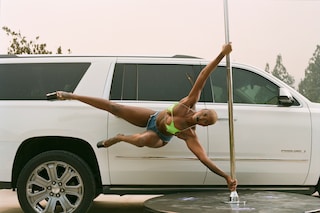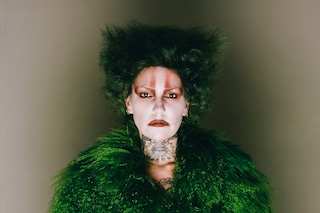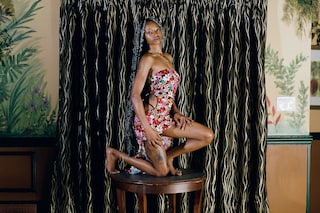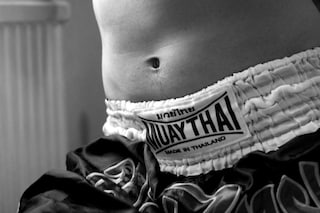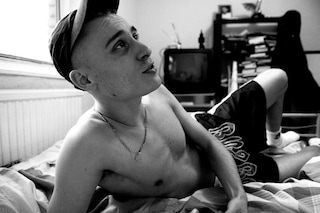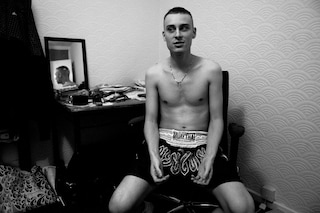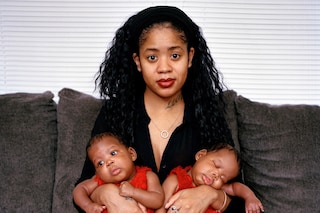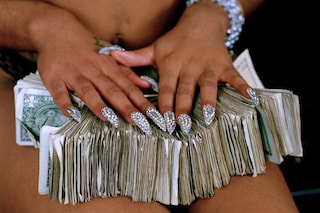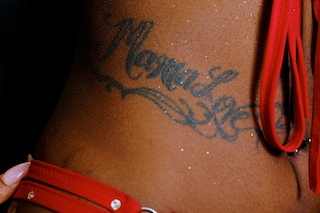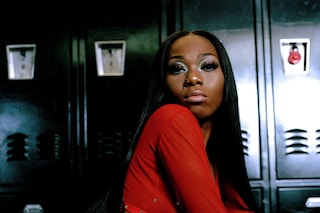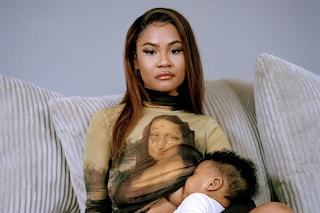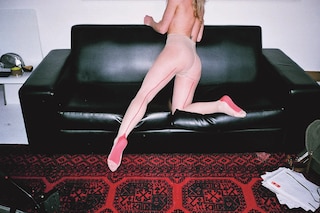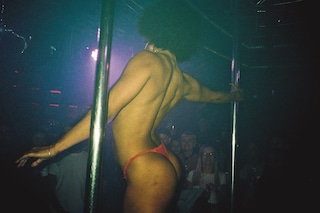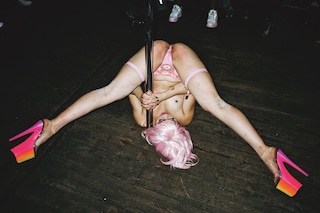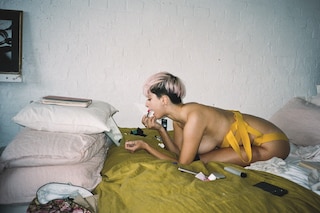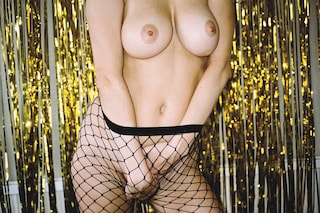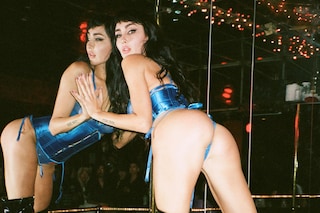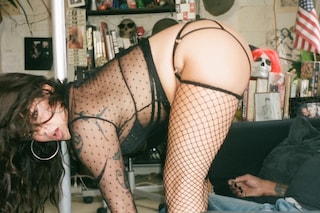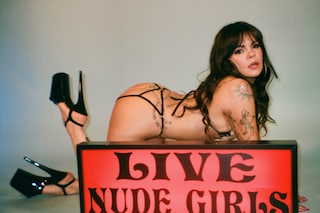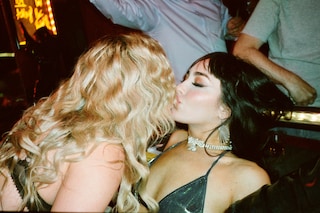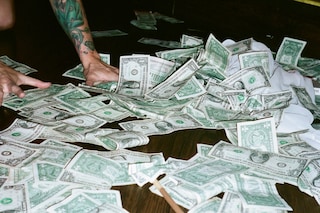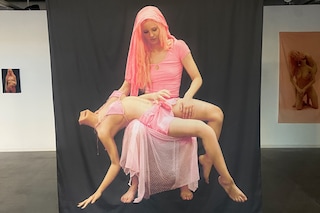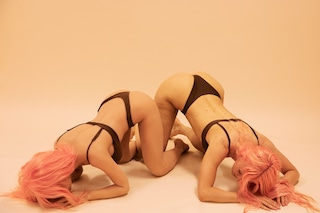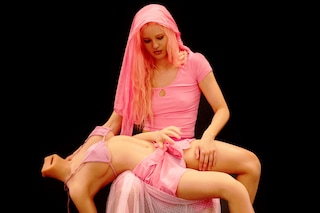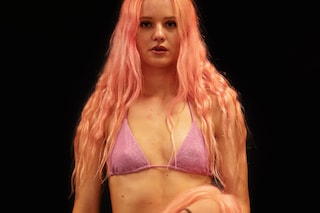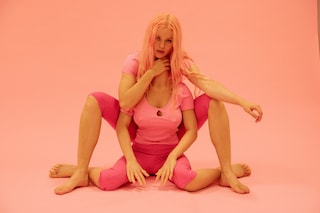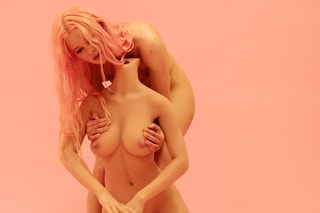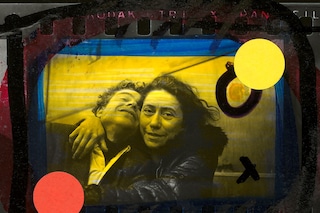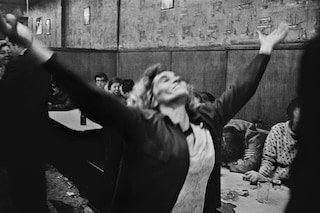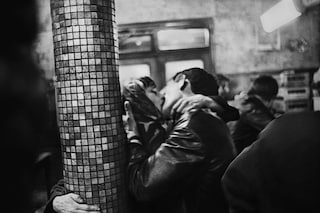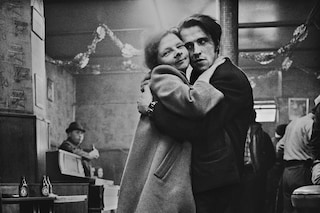We gathered together ten compelling photo projects engaging with the complexities of sexual labour
In recent decades, sex positivity has also helped to galvanise changing attitudes towards sex work. In general, our ideas about sexual labour and the surrounding ethics have evolved as we have begun to peel back the layers of judgement once directed towards this industry. This cultural shift has been reflected in art and, in particular, photography – a medium that can capture the realities of sex work while also expressing the nuanced, subjective experiences of those implicated in the industry.
The proliferation of photography online – distributed largely through social media – has exposed the actualities of sex work, confronting cultural shame at the same time. Kate Lister, author of A Curious History of Sex, points out internet culture has positively taken most sex work off the street and out of the phone box. Backing this point, a 2018 survey of UK-based sex workers revealed the profession has never been more visible and thus safer (consider the emergence of platforms like OnlyFans). Yet certain legislation, for example, last year’s controversial, Online Safety Bill, continues to drive sex work underground – workers are criminalised and ultimately become more susceptible to exploitation and abuse.
Thankfully, artists and photographers have been at the forefront of the movement resisting such limiting policies. Below, we look at some of the most unflinching photo projects documenting sex work, many of which challenge preconceived notions about what it means to harness your body and sexuality as a form of labour.
COLD LUNCH, ROXY LEE
Roxy Lee’s last solo show Cold Lunch at Ridley Road Project Space in Dalston left her with a repetitive strain injury. From presenting her works on 500 keyrings, the artist confessed that “my hand’s aching from punching all the little photos out.” Her labour of love paid homage to London’s underground, LGBTQ+ scene, as well as the gritty and diverse character of her native neighbourhood, Hackney.
She documents her work on her Instagram page @sausageandcustard which, like her practice, glorifies what could be considered both seductive and grotesque. From shots of dirt-stained feet clad in six-inch heels to close-up shots of sex toys (including vegetables) and lubricants, Cold Lunch unearthed the sordid details of sex work and surrounding culture, revealing “what happens behind closed doors”. Both playful and sometimes shocking, Lee’s series celebrates and normalises the livelihoods of sex workers without judgement and tackles censorship head-on.
CARNIVAL STRIPPERS REVISITED, SUSAN MEISELAS
Between 1972 and 1975, the American photographer Susan Meiselas travelled around the East coast capturing ‘carnival strippers’ – the women who performed striptease out of the back of a truck. Then in her mid-twenties, Meiselas felt drawn to the nomadic and precarious lifestyle of these women, as well as the complex dynamic between the performers, managers, and audience members.
The resulting publication would be her landmark photobook, Carnival Strippers (1976), which was republished last year. With an ethnographic approach, her project featured interviews with the dancers, their boyfriends, show managers and the punters. In her own words: “I really wanted to dive in and follow these working lives and all the dimensions I could – the aftermath, the late nights, the early mornings…to capture this feeling of the open road, this unpredictable life they were very drawn to.” Often focusing her lens on audience members, Meiselas’ series emphasises the voyeurism and spectacle of sex work.
DOES MONDAY WORK? ELLIE ENGLISH
Last year, the London-based photographer Ellie English released her intimate monograph Does Monday Work? A visual diary, the project offers a rare glimpse into the world of sex work and all the ambiguities inherent in the profession. English spent five years documenting her life as a sex worker, taking her camera to hotel rooms where she captured portraits of consenting clients and the interior surroundings, whether soiled bedsheets or bathroom tiles.
The aim was to encapsulate the complexity of client relationships and the politics surrounding sex work, without centring herself in the process. “As a culture, we’re practised in looking at women’s bodies, viewing them as sexual objects. Here, I refuse to give you that. I acknowledge my position but in a way that refuses for that to be the entire conversation.” The resulting series is raw and frank, though English evokes mystery and maintains the anonymity of her clients.
EXOTIC DANCERS, STEVIE VERROCA AND MADA REFUJIO
The collaborative duo Stevie Verroca and Mada Refujio came together after realising their shared love for the exotic dance and stripping communities, leading to the project Exotic Dancers – a photo series which portrays the unique experiences of women working as strip dancers across the US.
Addressing what they describe as “America’s complex relationship with sex”, the aim was to create a series of staged portraits of dancers in their element, to demystify the elusive underground world of stripping and allow each woman to give her testimony. While some exude pride and confidence, others struggle and resort to substances before entering the club. Offering a myriad of perspectives, the series captures both the external and interior lives of each dancer; pointing to their physical strength and mental resilience as they project themselves into a world that can easily push people over the edge.
Set across different urban landscapes in 14 cities across the US, the photographs are accompanied by quotes and anecdotes, many of which meditate on each dancers’ relationships to their own self-image. A body of work that intends to complicate our perspectives, the pair explained, “our goal is to make the portraits feel authentic, but not straightforward.”
MARC VALLÉE, DOCUMENTING THIERRY
A sex worker and political activist, Thierry Schaffauser was the subject of photographer Marc Vallée’s Documenting Thierry (2017). After meeting at a queer protest in London in 2008 and later at a sex workers’ protest in Soho, Vallée decided to focus on Schaffauser for a project looking at the social, economic and political issues surrounding sex work. “I would spend time with Thierry at his home in east London, drinking tea and talking about life, work, and politics as I was taking pictures.”
The final project, composed of black and white candid portraits taken between 2010 and 2012, became a cult zine for its frankness and accompanying text sharing Schaffauser’s views on sex work reform. With an anti-capitalist sentiment, it contemplates the alienation of sex workers from the labour and feminist movements and advocates for the decriminalisation of sex work altogether, yet Schaffauser says, ultimately, “I think work is exploitation whether it’s in the sex industry or any industry”.
ATLANTA MADE US FAMOUS, HAJAR BENJIDA
The ongoing project Atlanta Made Us Famous was started by the Moroccan-Dutch photographer Hajar Benjida after spending his first night at Atlanta’s notorious strip club, Magic City, in 2018. Initially taking a few backstage shots (on a night that Migos and Cardi B attended), Benjida returned the following year to document the dancers over several weeks. “I really wanted to get to know these women. You often see footage of them in the shadows, or only their silhouettes. You don’t really get a sense of who they are.”
Sensitively and compassionately shot, Benjida’s photographs reveal the women on stage, backstage and at home – breastfeeding their children or in the moments before performing. By befriending Ms. Elaine, the ‘house mother’ of the club, Benjida – as a woman photographer and ally to the dancers – earned private access. “They were happy to be the ones fully in focus, instead of another video girl in the background.”
WANTING YOU TO WANT ME, BRONWEN PARKER RHODES
Wanting You to Want Me by Bronwen Parker-Rhodes and Emily Dinsdale (illustrated with images by Parker Rhodes) dives into the taboo and shadowy world of London’s strip clubs. With both authors having worked as strippers while pursuing higher education, the aim of the photo project was to give agency to the women featured, giving them ownership of their narrative while also complicating our understandings of sex work: “It was really crucial to us to try and resist those very polarised ideas of stripping,” explains Dinsdale, who, along with Parker Rhodes, recorded many behind-the-scenes conversations in changing rooms with anonymous strippers. Featuring humorous, mundane and sometimes tragic reflections and anecdotes, the book explores the everyday life of stripping as well as the ambiguities of the feminist debate surrounding sex work. By spotlighting individual dancers, the book gives dignity and empowerment to those who were previously voiceless.
BITCH! YOU STRIPPIN’, SCARLETT KAPELLA
In 2018, Scarlett Kapella launched the Instagram account @therealbitchyoustrippin. Focusing on Hollywood’s strip joint Jumbo’s Clown Room, also known as ‘Jumbo’s’, Kapella spent the last few years chronicling her experiences working as a stripper. In conversation with Dazed she explained: “I wanted to document my unique perspective from the dressing room of Jumbo’s Clown Room, the legendary bikini bar where I perform, so I started bringing my camera to work.”
Located in East Hollywood, Jumbo’s has been open since the 1970s and has a legendary status for its kitsch but cool character, unconventional “stripper behaviour” and mixed clientele. Kapella’s photographs celebrate the seedy yet exhilarating atmosphere of Jumbo’s as well as the bar’s strong sense of community, her sister-stripper mentors and what she calls her “bitch posse”. For the artist, a strip club isn’t only about sexual gratification or male pleasure, but “an escape from reality where one can leave society’s troubles at the door, flirt, get drunk, and be entertained.”
A DOLL’S HOUSE, ARVIDA BYSTRÖM
At the heart of Arvida Byström’s solo show, A Doll’s House at Galleri Format is the colour pink and an AI sex doll named Harmony. Created by the company Realdolls as a kind of artificial and sexualised self-portrait, Harmony is styled identically to Byström. In the Swedish-born multidisciplinary artist’s words, “she is half-truth, half-fiction.” A parody of the pervasive online ‘influencer girl’ culture, Harmony also points to the inevitability of a post-human future (though in the artist’s perspective we are all “already part cyborgs).” Inspired by the influence of technologies and post-humanist philosophy, Byström’s work contemplates the positive and nefarious effects of our digitally influenced world, and how everything mediated through a screen or technology can shape sexuality.
COLOR LEHMITZ, ANDERS PETERSON
The Swedish photographer Anders Peterson was in his twenties when he discovered Café Lehmitz, in the heart of Hamburg’s Red Light District – an area known as “The most sinful mile”. Intrigued by the bar’s seedy atmosphere characterised by swirling cigarette smoke, heaving bodies and debauchery, Peterson described the club as “a place of survival”. Local misfits would come to escape the everyday through hedonism: drink, dance, and prostitution. Peterson turned his lens towards the café and its community for almost three years, finding the café regulars fascinating for their “presence and a sincerity that I myself lacked.” The project resulted in the publication of his first photobook, Café Lehmitz [Prestel] in 1977, a cult body of work that compassionately and humanely documents the pleasure-seekers shaping the underbelly of Hamburg’s nightlife.
Join Dazed Club and be part of our world! You get exclusive access to events, parties, festivals and our editors, as well as a free subscription to Dazed for a year. Join for £5/month today.
